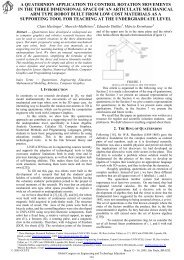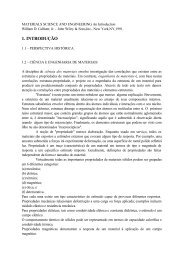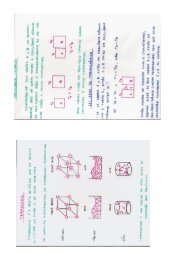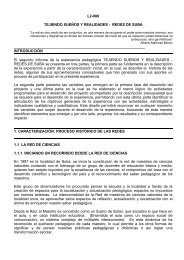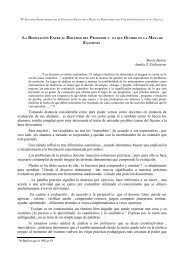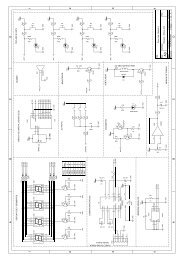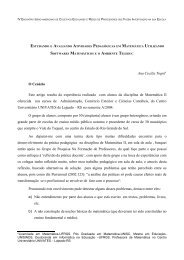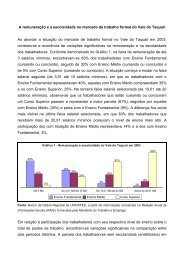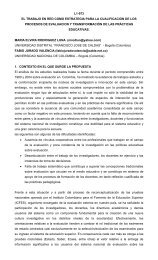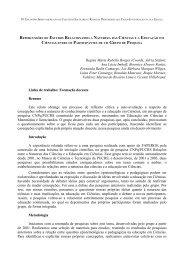âR. âR,
âR. âR,
âR. âR,
You also want an ePaper? Increase the reach of your titles
YUMPU automatically turns print PDFs into web optimized ePapers that Google loves.
Centralizers on semiprime rings 243<br />
Right multiplication of the above relation by A(x; y)x gives because of (29)<br />
(33) xA(x; y)zA(x; y)x =0; x; y; z 2 R:<br />
Let us prove relation (30). The linearization of (8) gives<br />
(34) [T (x);y]+[T (y);x]=0; x; y 2 R:<br />
Putting xy+yx for y in the above relation and using (8) we obtain 0 = [T (x);xy+<br />
yx]+[T (xy + yx);x]=x[T (x);y]+[T (x);y]x +[T (xy + yx);x]. Thus we have<br />
[T (xy + yx);x]+x[T (x);y]+[T (x);y]x =0; x; y 2 R:<br />
According to (34) one can replace [T (x);y]by ,[T (y);x] in the above relation. We<br />
have therefore [T (xy + yx);x] , x[T (y);x] , [T (y);x]x = 0, which can be written<br />
in the form [T (xy + yx) , T (y)x , xT (y);x]=0. The proof of relation (30) is<br />
therefore complete. Relation (30) makes it possible to replace in (33) xA(x; y) by<br />
A(x; y)x. Thus we have<br />
(35) A(x; y)xzA(x; y)x =0; x; y 2 R;<br />
whence it follows that<br />
(36) A(x; y)x =0; x; y 2 R:<br />
Of course we have also<br />
(37) xA(x; y) =0; x; y 2 R:<br />
The linearization of (36) with respect to x gives<br />
A(x; y)z + A(z; y)x =0; x; y; z 2 R:<br />
Right multiplication of the above relation by A(x; y) gives because of (37)<br />
A(x; y)zA(x; y) =0; x; y; z 2 R;<br />
which gives A(x; y) =0,x; y 2 R. The proof of relation (28) is therefore complete.<br />
In particular for y = x relation (30) reduces to<br />
2T (x 2 )=T (x)x + xT (x); x 2 R:<br />
Combining the above relation with (8) we arrive at<br />
and<br />
T (x 2 )=T (x)x; x 2 R;<br />
T (x 2 )=xT (x); x 2 R:<br />
By Proposition 1.4 in [7] it follows that T is a left and also right centralizer, which<br />
completes the proof of the theorem.<br />
<br />
Putting (1) y = x in relation (1) we obtain<br />
(38) T (x 3 )=xT (x)x; x 2 R:<br />
The question arises whether in a 2-torsion free semiprime ring the above relation<br />
implies that T is a centralizer. Unfortunately, wewere unable to answer this question<br />
in general. However, we succeeded in proving that the answer is armative<br />
in case R has an identity element.



